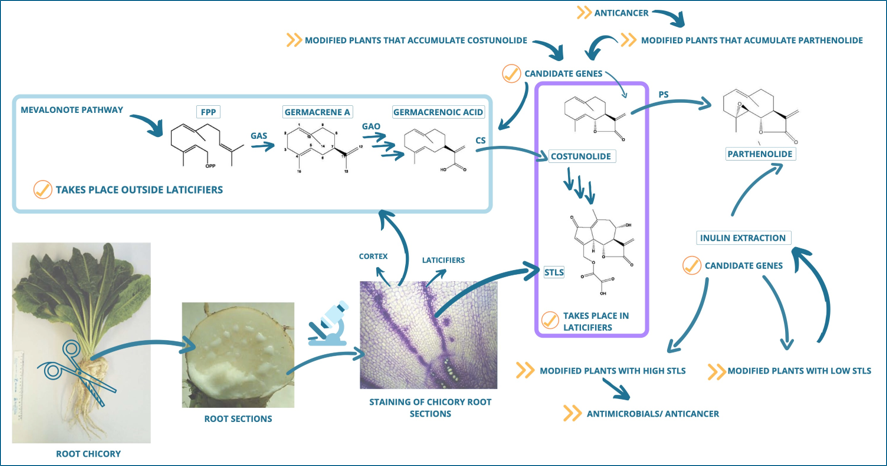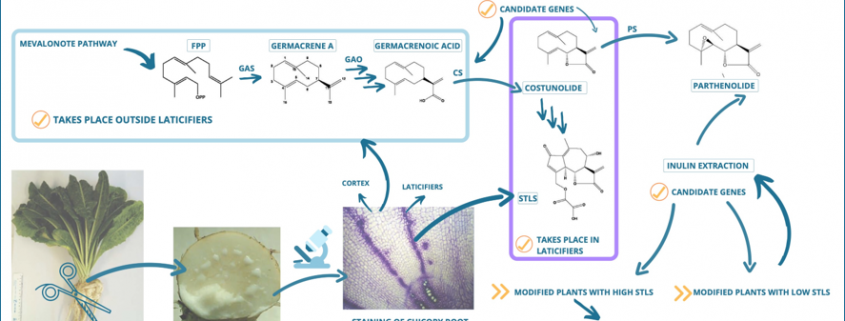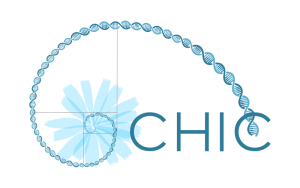Implementation of NPBT in chicory for bioactive terpenes
Root chicory is grown for inulin, but it also produces a number of compounds in its latex. These compounds belong to the class of terpenes and the most abundant of these are sesquiterpene lactones (STLs), which have a potential as antimicrobial and anticancer bioactives. However these compounds may interfere with the extraction of inulin. Therefore in CHIC we have the following twofold objectives:
- To understand how these terpenes accumulate in the latex, how laticifers (the specialized cells that accumulate latex) develop and characterize the bioactivity of compounds that are present in the latex. With this knowledge at hand, chicory could be developed as a biofactory for the production of valuable sesquiterpene lactones. To reduce the impact of latex in the extraction of inulin, we aim to decrease the number of laticifer cells in the tap root.
- Our data shows that the early steps of STLs biosynthesis take place outside of the laticifer cells and STLs accumulate inside of laticifers by transportation mediated process. Based on this information, candidate genes for the development of laticifers and biosynthesis of STLs have been selected. Preliminary bioactivity assays indicate the presence of anti-biofilm activities.
Furthermore, candidate genes involved in the accumulation of costunolide and parthenolide have been identified to generate modified plants with higher amount of parthenolide, an anticancer compound.




 This project has received funding from the EU Horizon 2020 research & innovation programme under grant agreement N. 760891.
This project has received funding from the EU Horizon 2020 research & innovation programme under grant agreement N. 760891.

